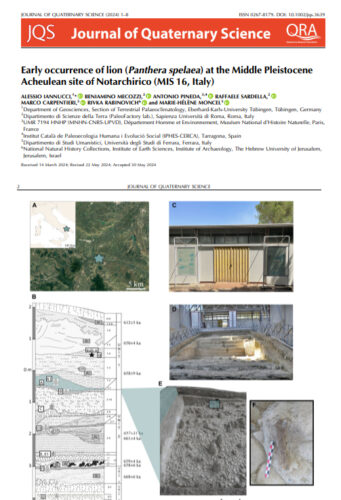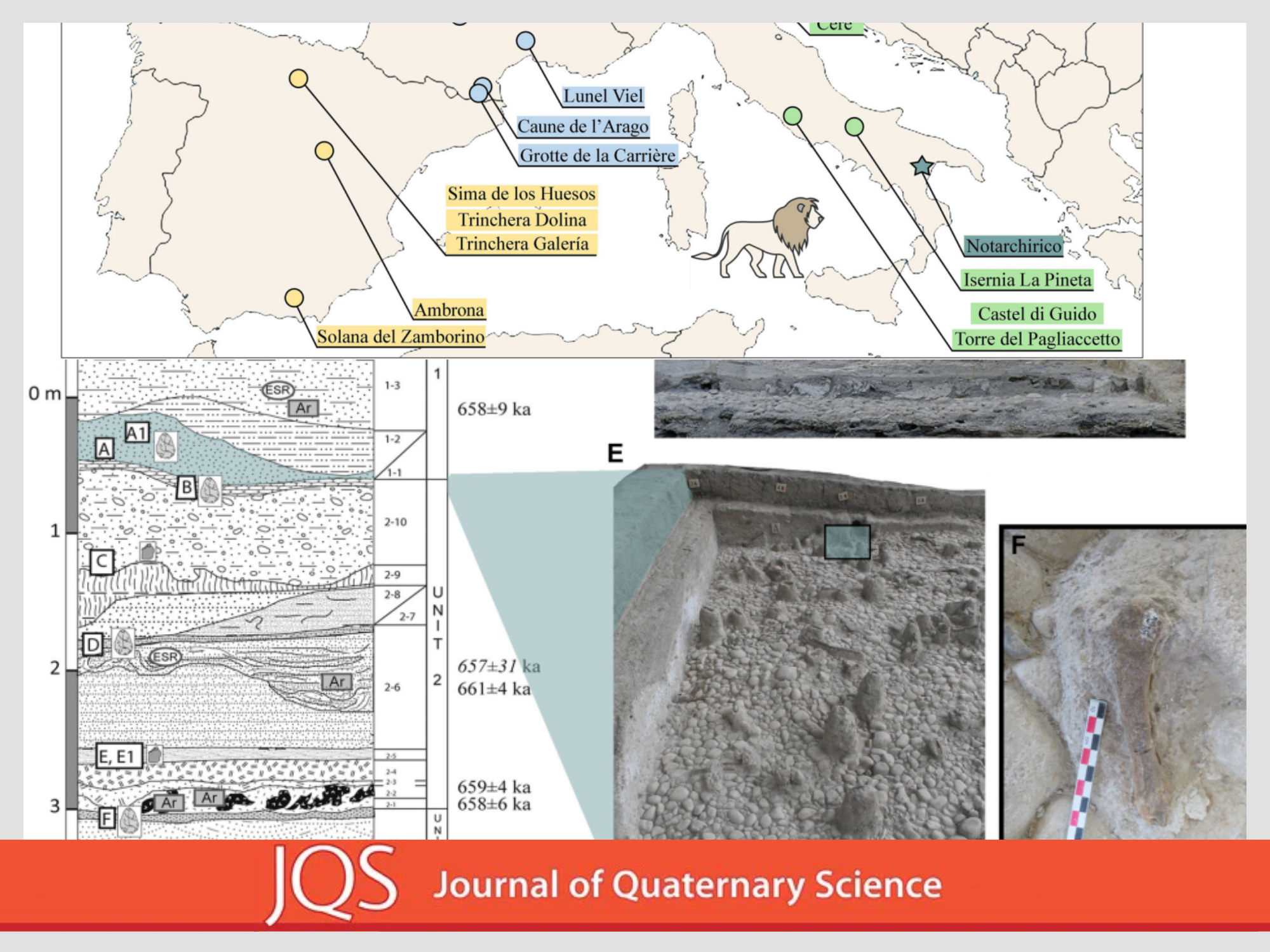Our latest research reports the earliest confirmed occurrence of the lion (Panthera spelaea) in southwestern Europe, discovered at the Middle Pleistocene Acheulean site of Notarchirico in Italy, dating to ~660–612 ka (MIS 16).
This specimen represents the earliest confirmed occurrence of this species in southwestern Europe. The sedimentary sequence at Notarchirico is one of the earliest Acheulean manifestations in Europe, marking the transition from the Early to the Middle Pleistocene. The simultaneous presence of Acheulean tools and large mammals, such as lions, highlights the ecological and behavioral adaptability required to cope with the environmental fluctuations of this period.
The sedimentary sequence at Notarchirico spans from the interglacial MIS 17 to the glacial MIS 16 (~695–610 ka), providing evidence of recurrent hominin occupations and early Acheulean technology in Europe. The discovery of the lion highlights an early dispersal of large carnivores into Europe during the Early–Middle Pleistocene Transition, coinciding with the spread of Acheulean technology. This study underscores the importance of robust chronologies in understanding the ecological and bioevents of this period.
For more détails, download the full article in PDF format below :


